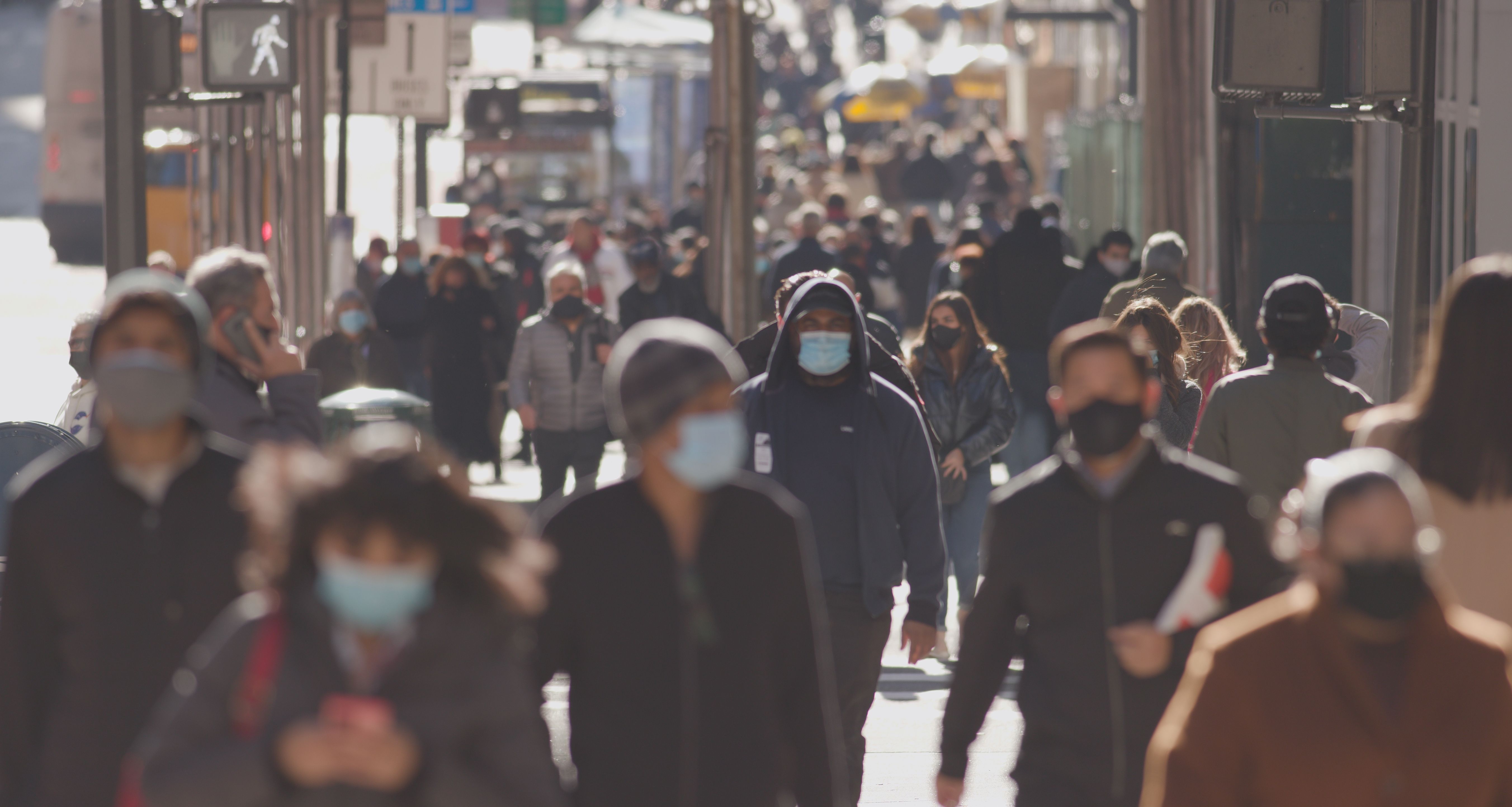News
Article
Study Confirms Race, Exposure Risk Play Significant Roles in Who Contracts COVID-19
Author(s):
The findings could help in future vaccine prioritization strategies and therapeutic allocation policies for other pandemic.
Race and exposure risk were major predictors in who contracted COVID-19, according to the findings of a recent study.
Individuals walking and wearing masks | Image credit: Blvdone- stock.adobe.com

In the study, conducted by the COVID-19 Prevention Network (CoVPN), researchers used previous knowledge to identify risk factors that are associated with COVID-19, severe COVID-19, and SARS-CoV-2 infection that will be able to aid future vaccine prioritization strategies and therapeutic allocation policies.
“Much of the data defining risk for either acquisition of SARS-CoV-2 or severe COVID-19 come from studies that relied on surveys, registries, or electronic medical records. These data often lack a harmonized definition of outcomes, and none used active surveillance. Moreover, high-quality data regarding risk factors for broadly symptomatic COVID-19 are sparse, despite clear, long-term impacts of disease,” said the authors of the study in Jama Network.
According to the study, in order to advance the previous data, CoVPN conducted a phase 3 vaccine clinical trial. At the start of 2020, 4 randomized, controlled efficacy trials were guided with corresponding protocols. The individuals that were selected to participate in the study included adults from around the world that were at least 18 years old, in stable health, and at risk for SARS-CoV-2.
This phase of the study was conducted from April 2022 to February 2023 and involved 57,692 participants that were picked at random to receive placebo injections. The median age of the individuals was 51 years, but the study included individuals who were 18 to 95 years of age. From the 57,692 participants, 53.8% were male and 20.3% were 65 years or older. However, 12.6% of placebo participants were 65 years or older.
Race and ethnicity were categorized as American Indian or Alaska Native, Asian, Black or African American, White, other, and multiple. Indigenous individuals from South America were classified together with American Indian or Alaska Native, according to the FDA definition. Participants also had the option to select other race without specifying.
According to the press release, 3270 participants were American Indian or Alaska Native, 7829 were Black or African American, 12,678 were Hispanic or Latino, and 40,745 were White. Throughout all 4 trials these demographics were constant.
The study confirmed that the exposure risk played a significant role in which patients contracted COVID-19 in the trials. Out of all the participants, living in a low-risk condition was the most common, with 26,036 individuals. Medium risk living condition followed, with 20,582 individuals. Next was high risk living conditions with 7448 individuals, and very high risk followed with 3629 individuals. The low- to very high-risk conditions reflected roughly the same populations for the workplace. In each study, the living risks were vastly different depending on the region and population.
“As age and ethnicity, 2 demographic characteristics of COVID-19 research focus, were associated with COVID-19 rates in the univariate analyses, we examined their interactions with other covariates and found significant interactions between age and workplace exposure risk and between evidence of previous SARS-CoV-2 infection and ethnicity. High workplace exposure was associated with an increased rate of COVID-19 among adults aged 18 to 64 years but a decreased rate among adults 65 years or older,” said the study authors.
The findings suggest that the hazard of COVID-19 was related to workplace exposure risks and living condition risks that were connected to previous SARS-CoV-2 infection. Region also impacted the differences in the study population and the variant that was circulating at the times of the trials. Other findings suggest that some populations may be more at risk for SARS-CoV-2 and less at risk for COVID-19 specifically.
The secondary cross-protocol analysis provided a detailed assessment of COVID-19 diseases and SARS-CoV-2 infections that could be essential to identifying risks by population for possible future pandemics.
Reference
Clinical and Demographic Factors Associated With COVID-19, Severe COVID-19, and SARS-CoV-2 Infection in Adults. Jama Network. Study article. July 13, 2023. Accessed July 18, 2023. https://jamanetwork.com/journals/jamanetworkopen/fullarticle/2807188
Newsletter
Stay informed on drug updates, treatment guidelines, and pharmacy practice trends—subscribe to Pharmacy Times for weekly clinical insights.






